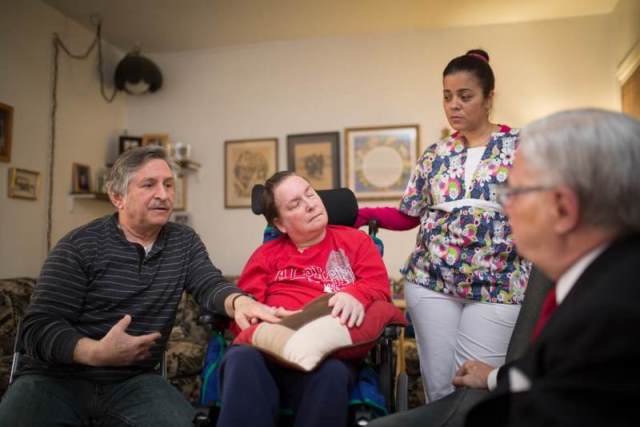
Whether you are a professional or family caregiver, home care recipient, or otherwise, you know why home care is safer, more patient-preferred, and less costly than institutional care. Home care provides vulnerable seniors and adults with disabilities with one-on-one care that enables them to stay safe and independent in their own communities. While its benefits—and the inherent drawbacks of institutional care—are evident to us, home care is still not widely recognized as a long-term solution. This is because nursing home care is still often seen as the “default” option for those that need consistent care, particularly under Medicaid.
But tables are beginning to turn: As the COVID-19 pandemic has shed light on the dangers of nursing home care. With recent reports citing that a staggering 40% of COVID-related deaths have occurred in nursing homes, people are more widely recognizing home care as the long-term care setting of the future.
Home care saves state Medicaid programs money and helps vulnerable Americans stay out of costlier and more infectious settings like hospitals and rehab facilities. It enables more than 8.3 million Americans to remain healthy at home, thanks to the 3.2 million compassionate and dedicated frontline direct care workers, including home health aides and personal care assistants, that keep these at-risk populations safe, independent, and out of riskier institutional settings.
In a post-COVID world, home will become recognized much more widely as the care setting of the future. With the US’s aging population growing quickly, and with families’ recently-discovered reservations about placing their loved ones in a long-term care facility, it is important that governments across the country take steps to make sure that the home care industry grows proportionately along with the demand for it. This includes: Increasing state and federal Medicaid rates for home care services so that providers can raise wages and allow more caregivers to be recruited to the home care workforce; Rethinking outdated laws and regulations that allow vulnerable populations to more readily access nursing home care; and instituting built-in protections for Medicaid-based agencies, such as relief funding for extraneous costs that occur during an emergency like COVID-19.
A “Home First” mentality would allow for individuals to stay safe at home and away from group settings that encourage virus spread. Now more than ever, the potential dangers of institutional care are becoming a frightening reality and we as a nation need to consider the future of healthcare as our population continues to age, and as more medically-fragile and disabled individuals are able to live independently. By updating laws to prioritize home care, we have the opportunity to create a meaningful, cost-effective and common-sense change to healthcare for the post-COVID future.
If you are ready to advocate for home health care, please contact us at [email protected].







